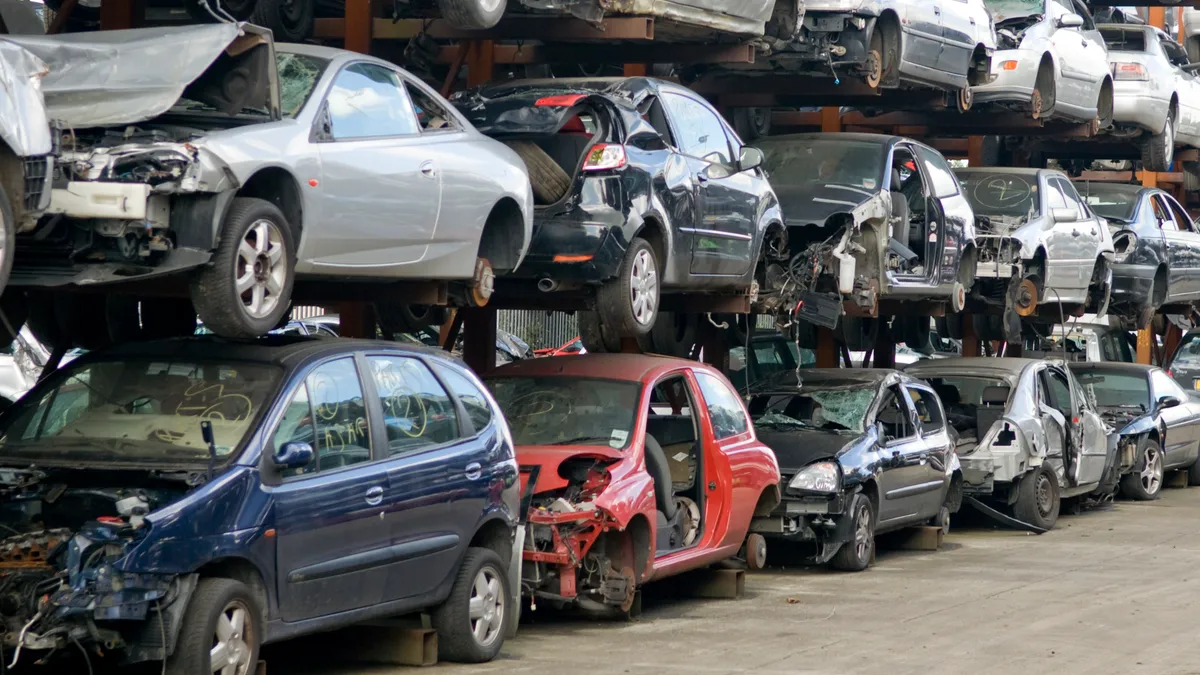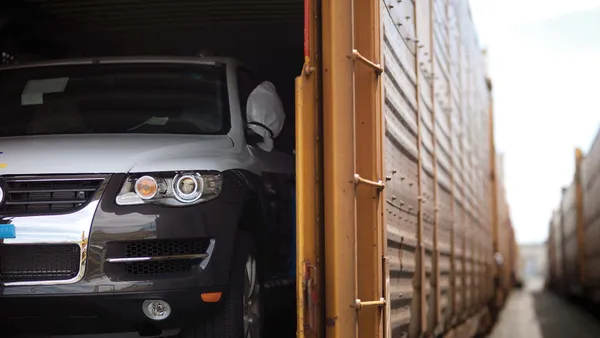Dive Brief:
- The European Commission proposed a rule Thursday that aims to significantly improve the automotive industry’s environmental sustainability by encouraging recycling and the reuse of spare parts when vehicles reach the end of their service life.
- The rule would require automakers to provide dismantlers with detailed instructions about replacing and removing components after a vehicle's service life ends. It would also mandate that automakers use 25% recycled plastic in their vehicles, a quarter of which must come from end-of-life vehicles.
- The measures would reduce carbon emissions by 12.3 million tons annually by 2035, the Commission said. It estimates the rule would create 1.8 billion euros in net revenue by 2035.
Dive Insight:
The proposal is part of a broader EU effort, including the European Green Deal and Circular Economy Action Plan, to reduce the waste and climate pollution associated with vehicle production and disposal. More than six million vehicles in Europe reach their end of life each year, creating waste and pollution.
“The automotive industry plays an important role in accelerating the transition to the circular economy,” European Commissioner for the Environment, Oceans and Fisheries Virginijus Sinkevičius said in a statement. “This new approach will make the European vehicle industry more sustainable and resilient, reduce dependence on primary raw materials and energy, boost EU’s recycling sector and enhance the markets for used spare parts and secondary materials.”
But the European Automobile Manufacturers Association, which represents 14 Europe-based automakers, said the proposal may create conflicting or duplicative rules.
“While the proposal is pushing for ambitious recycled content targets, European auto manufacturers believe lawmakers should instead focus on ensuring a coherent legislative framework that balances conflicting waste, product, and chemical regulations for vehicles,” ACEA Director General Sigrid de Vries said in a statement.
European automakers also worry the rule would set unrealistic targets.
“We are also concerned that the Commission has not sufficiently examined imbalances in the demand and supply of recycled materials and existing technology gaps before proposing these ambitious targets,” de Vries said.
The Commission said the regulation could improve the efficient reuse or recycling of 5.4 million tons of materials and boost the recovery of critical raw materials, including plastics, steel and aluminum.
But recovering the rare earth materials used in electric motors is crucial, the Commission said. “Enhancing the EU's resilience against supply chain disruptions and reducing its dependency on critical raw materials imports is key to the transition to zero-emission vehicles."
The proposal would build on earlier European Union regulations governing end-of-life vehicles' reusability, recyclability and recovery. EU research shows those measures reduced the environmental impact associated with vehicle production and end-of-life treatment.
Earlier this week, the EU passed a regulation covering the entire lifecycle of batteries, including lithium recovery targets, recycled content minimums for electric-vehicle batteries and recycling efficiency targets for nickel-cadmium batteries.
The Commission estimates that the proposed rule would cost “all economic operators and consumers” less than $79 per vehicle on the market in 2035.
The proposal would also ban the export of end-of-life vehicles from Europe “to avoid that they generate air pollution or risks to road safety in third countries,” the Commission said. It would also make automakers responsible for the vehicles they produce when they reach the end of their life, “possibly through the financing of costs for recycling which cannot be covered by recyclers themselves.”
In Europe, the automotive industry makes up 10% of plastics consumption, 17% of steel used, 42% of aluminum used in transport equipment and 6% of copper used. Only 19% of plastics from end-of-life vehicles are recycled in Europe, while most metals, composite materials and electronics are not recycled.
The European Parliament and the Council of the European Union, the EU’s legislative bodies, must approve the proposed rule before it takes effect.












